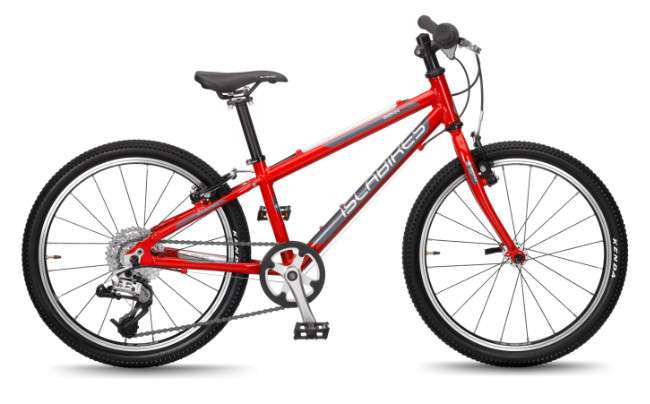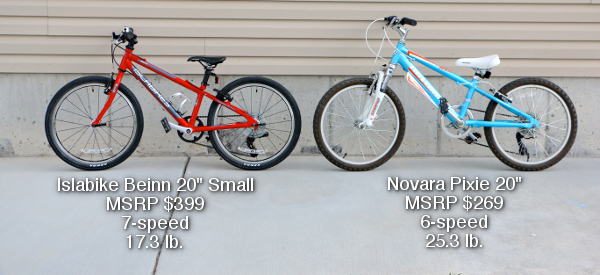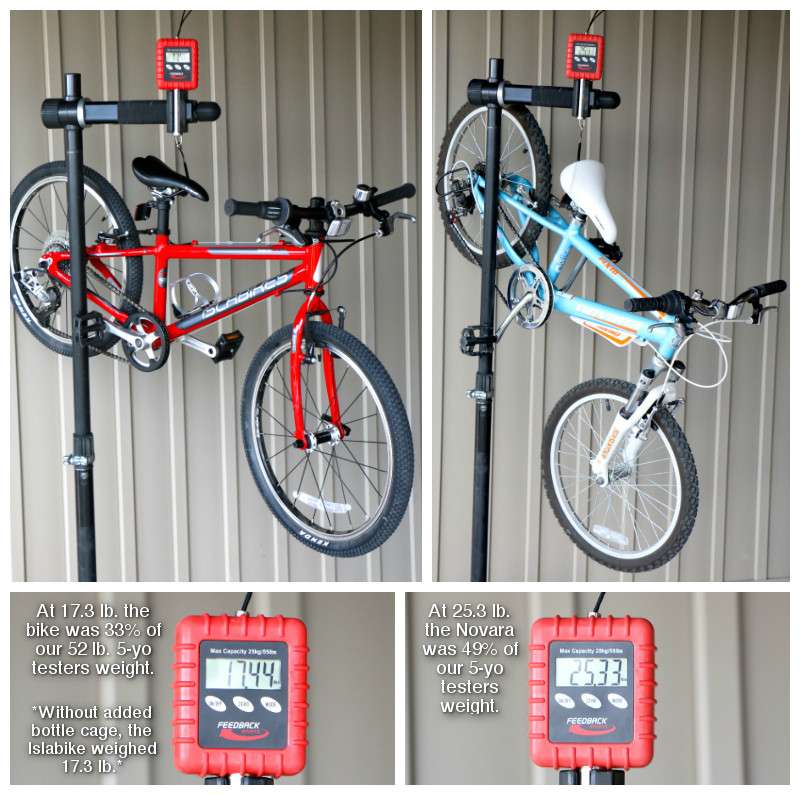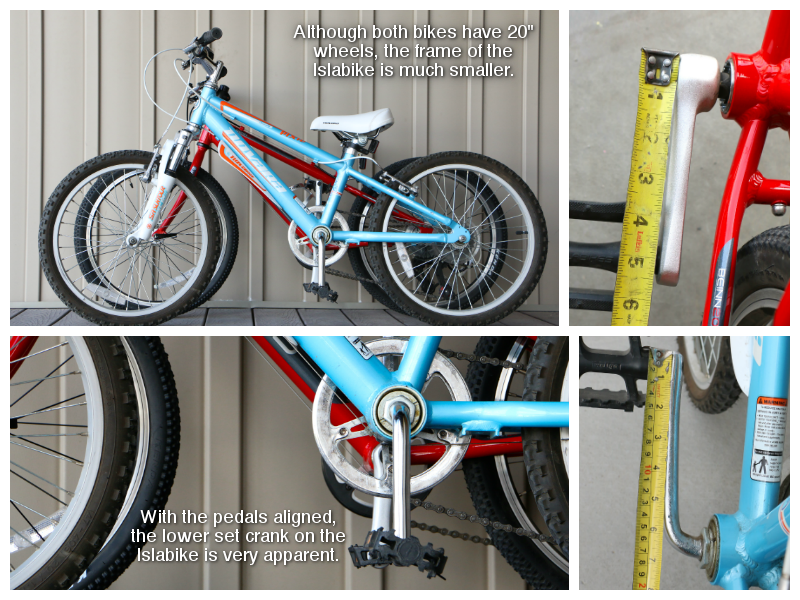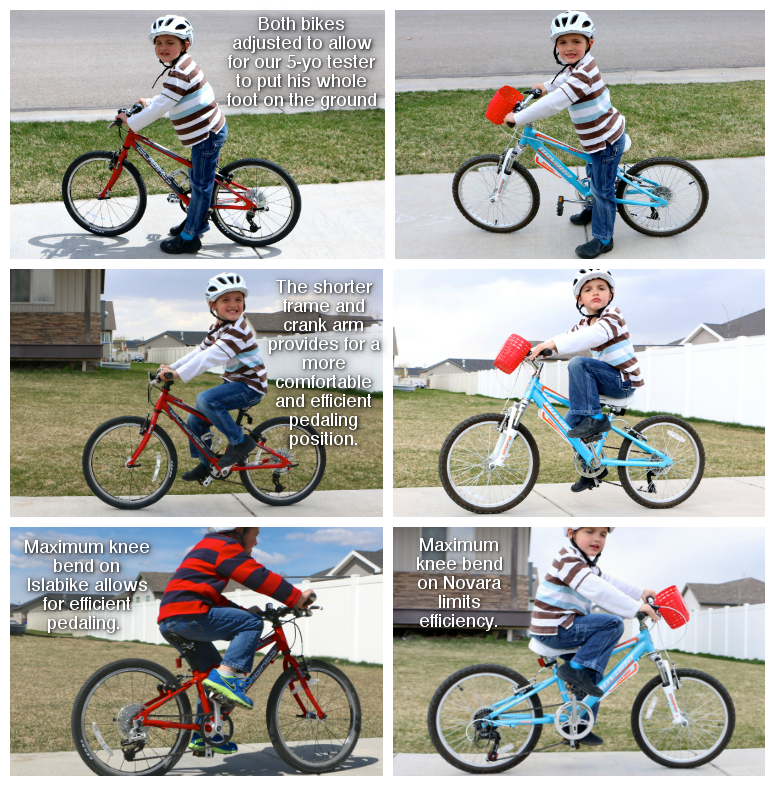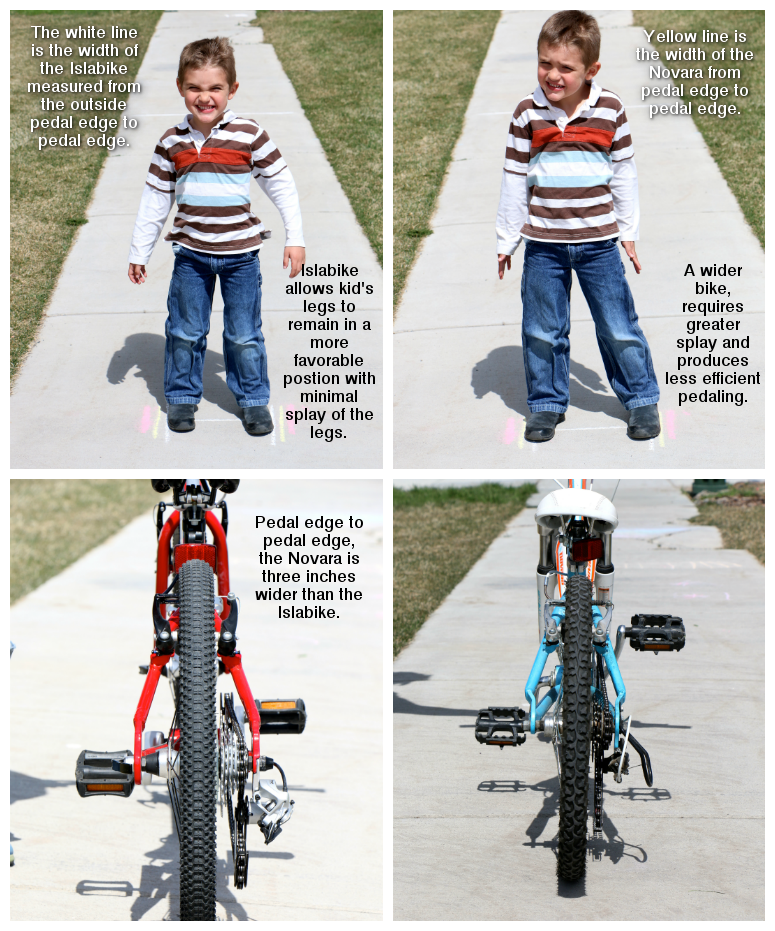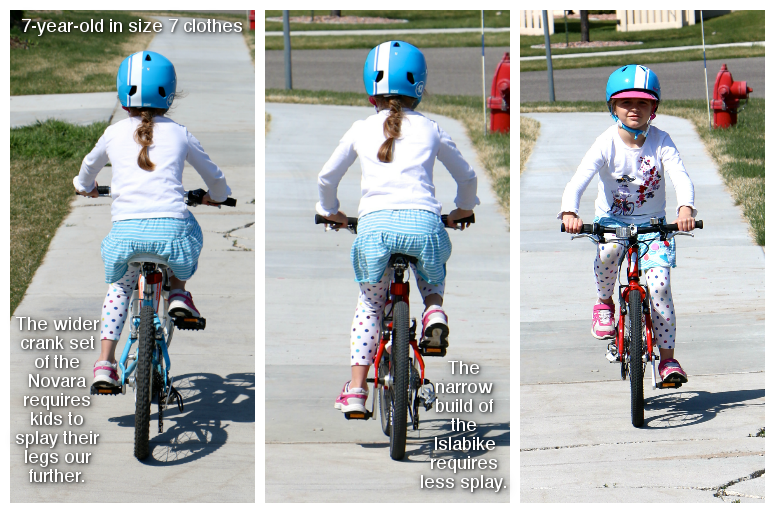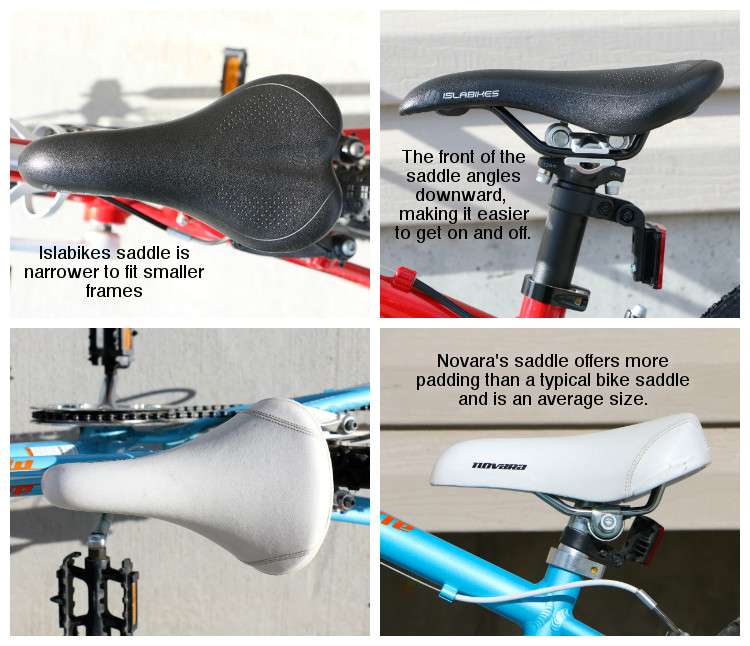Perfect from top to bottom, the Islabike 20 BEINN series is our top pick for kids doing any extended rides on paved surfaces. Read the review to find out more.
Islabikes BEINN 20 Review – Results of our Test Rides
**Islabikes are no longer available in the US** For 20 inch bikes available in the US, check out our list of 12 Best 20 Inch Bikes for Kids.
This review is of the Islabikes BEINN 20″ Small. The BEINN 20″ Small is best for ages 5+ and the large for ages 6+. The two bikes only differ by size.
Over the years, the technological advances on bicycles have been remarkable. From carbon fiber frames to custom fitting and dialed in geometry, it’s no surprise that the sport of cycling continues to grow year by year. Sadly, the opposite has happened in the children’s biking market. While adult bikes transition into efficient, lightweight marvels, children’s bikes have morphed into gaudy, sugary-sweet, super-hero-covered tanks. Located in the toy section at the nearest big-box store, the majority of kids bikes are extremely heavy, poorly designed, difficult to ride and rarely last a few years before they join their counterparts at the dump. Seeing a need for a change, Isla, a highly acclaimed British bicycle designer, applied her years of experience to create Islabikes, a bike line designed exclusively for the unique needs of children.
Engineered specifically for kids, Islabikes went beyond simply reaching for the smallest and lightest parts available, they completely redesigned and re-engineered several key components to ensure each of their models would fit the smaller, narrower frames of children. Upon first glance of the Islabikes Beinn 20,” it was quite clear that Isla stayed focused on her goal. From the brake levers to the pedals, the components are not just smaller than those on adult bikes, they are scaled appropriately to fit a child’s frame. As a result, compared to other children’s bikes with the same size tire, Islabikes have a narrower Q factor (see below) and their frames are set lower to the ground to allow for a lower center of gravity.
**The Islabikes BEINN 20″ size small and large now cost $439 (without shipping)**
While impressive on paper (and on screen), the bike’s performance is the real determining factor. To get a feel for just how much better Islabikes performs compared to other 20″ bikes, we put it through several side-by-side comparisons with the Novara Pixie 20.” A mid-range bike costing $269, the Novara is a quality 20″ bike from REI that has a similar frame design and components as most high-end bikes.
Weight
The weight of a bike places a major role in the overall handling and performance of the bike. While professional racer’s bikes often weigh less than 10% of their body weight, the standard big-box-store bike can weigh as much as 50% of a child’s weight. Just as an adult would, kids often have difficulty balancing, getting control and stopping a bike that weighs half their body weight. By utilizing new technologies and an aluminum alloy frame, Islabikes was able to dramatically lower the weight of their bikes. Compared to the Novara Pixie, the Islabikes Beinn weighed 8 pounds less or 33% of our 52 lb. five-year-old tester weight vs. 49% with the Novara.
Frame Geometry
To help improve the overall handling of their bikes, improve a child’s position on a bike, as well as allow kids to fit onto larger wheeled bikes, Islabikes designed their frames to be closer to the ground. Closer to the ground, the pedals are more likely to hit the ground when pedaling through turns, so to compensate Islabikes shortened the crank arm on their bikes.
While a smaller crank arm does decrease the leverage a child has on the crank, when used in combination with a lower frame, it helps to increase the overall efficiency of the bike by creating a more favorable peddling position for the child. To demonstrate the difference, we adjusted the seats of both bikes to allow our five-year-old testers to place his whole foot on the ground and then had him ride both bikes. As shown below, the shorter crank arm and lower frame allowed our tester to keep his knee close to the optimal 90-degree bend (for maximum efficiency) during his complete pedal rotation around the crank. In comparison, the same motion on the Novara required a greater bend at the knee, which in turn made the bike more difficult to pedal. Due to the decreased efficiency of every pedal stroke on the Novara, our tester also found the Novara difficult to start as he was able to gain less speed with every stroke. In addition, the long crank arm/high frame found on essentially every child bike is also one reason why kids often prefer to stand up as they ride. Pedaling while standing is often easier for them as it provides them more space to achieve the optimum 90-degree knee bend.
The Q Factor
The “Q Factor” of a bike is essentially the distance between where the pedals attach on a bike (for a more thorough explanation, read Q factor on Wikipedia), which determines the width that a person must splay their legs in order to pedal the bike. For the average adult rider, the Q factor of a bike is generally a non-issue as the standard-sized components that determine the Q factor on adult bikes creates a favorable amount of splay (approximately the same distance your legs are apart as you walk) for an adult frame. To help keep costs down on children bikes, those same standard components are often used on children’s bikes, which require kids to splay their legs out at a much greater angle as compared to adults. According to a study done in the UK, a higher q factor not only decreases the efficiency of each stroke, it also increases the risk for injury. As a result, Islabikes reengineered the crankset of their bikes to allow for an optimal Q factor for kids. To demonstrate the difference, we measured both bikes from pedal edge to pedal edge. We then duplicated those measurements on the sidewalk with chalk and had our tester place his feet on the inside of those lines, representative of where the pedals would be on the bikes. With the white line representing the width of the Islabikes and the yellow representing the Novara (ignore the pink line), the additional splay required to ride the Novara is apparent.
When viewed in motion with our seven-year-old tester, the increased amount of splay needed to pedal the Novara vs. the Islabikes is clearly demonstrated.
Brakes
With increased efficiency comes the need for better braking. While the standard V-pull braking system provides enough power to sufficiently stop a child’s bike, in most cases, the ease at which a child can reach and pull on a brake lever is severely lacking. Staying true to their mission, Islabikes designed their own, child-specific, braking lever to allow for easier and more powerful braking ability. As shown below, even with the Novara brake adjusted as much as possible, it was much easier for our five-year-old testers to pull the Islabikes brake lever versus the Novara’s.
Furthermore, the brakes on the Islabikes are so responsive, that prior to riding the bike, Islabikes highly recommends having your child walk beside the bike and practice activating the brake levers to help a child get a feel for the power the bikes provide.
Saddle
Leaving no stone unturned, Islabikes also addressed the shape of the saddle. To facilitate easier mounting and dismounting, the front of every saddle is angled downward. Their saddles are also narrower to better fit the smaller frames of kids.
The Bell
Like a cherry on top, each Islabikes comes with a bell!
Performance
The difference between our five-year-old and seven-year-old testers riding the Islabikes versus the Novara akin to the differences of a motorcycle and a moped competing in a race. Both have two wheels and can easily perform the task, but one is much more nimble, easier to maneuver and more enjoyable to ride than the other. From day one, it was clearly apparent that our testers were not only more comfortable on the Islabikes, but that it was more efficient as well. With his previous bike (an old 16″ Specialized that was much too small for him) our five-year-old tester dreaded long bike rides, with the Islabikes Beinn, he begs for them. While our seven-year-old tester once loved her Novara (which is honestly a great bike for the price), she now rides the Islabikes Beinn every chance that she gets.
Bottom Line
While pricey, if Islabikes are in your budget, they are worth every penny. From their newfound desire for longer rides to their willingness to ride faster, be prepared to be amazed at the difference one bike can make in your child’s life.
Related Review: WOOM 4 review
FTC Disclosure: Affiliate links are included in this review. No monetary compensation was provided for this review, however, the reviewed product was supplied by the manufacturer or distributor to help facilitate this review. All opinions and images are that of Two Wheeling Tots LLC. All content and images are copyrighted and should not be used or replicated in any way. View our Terms of Use.

